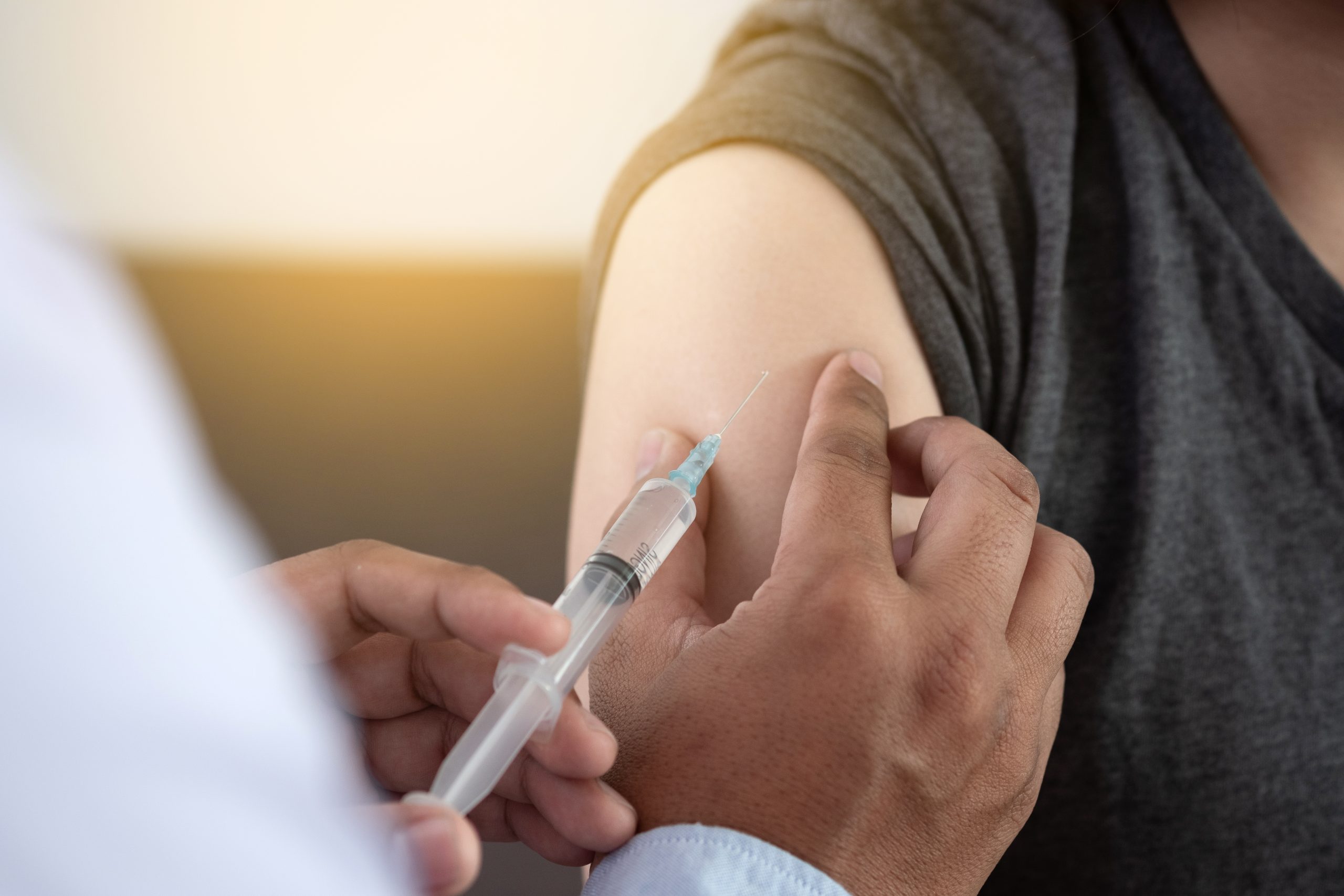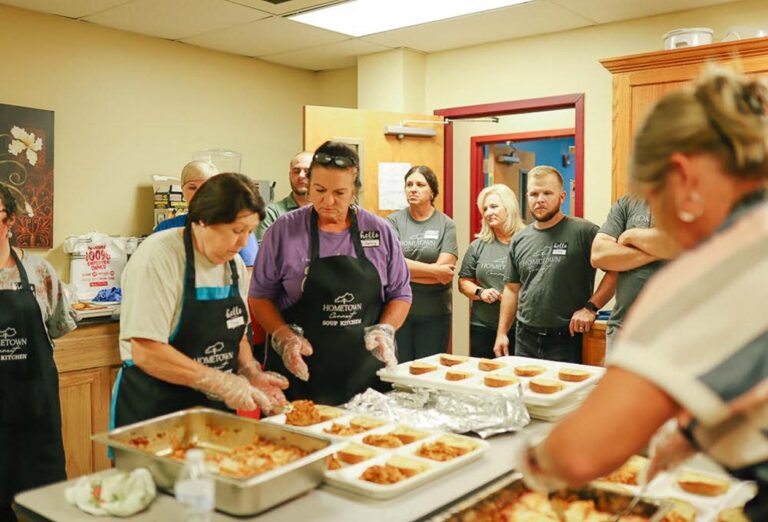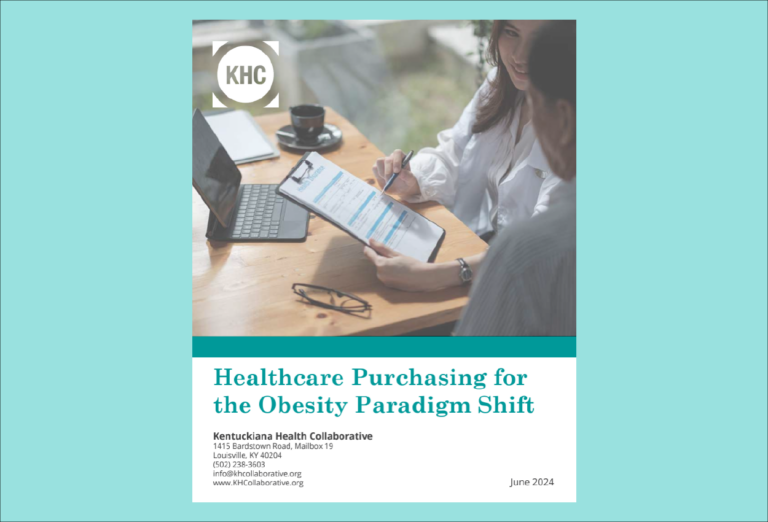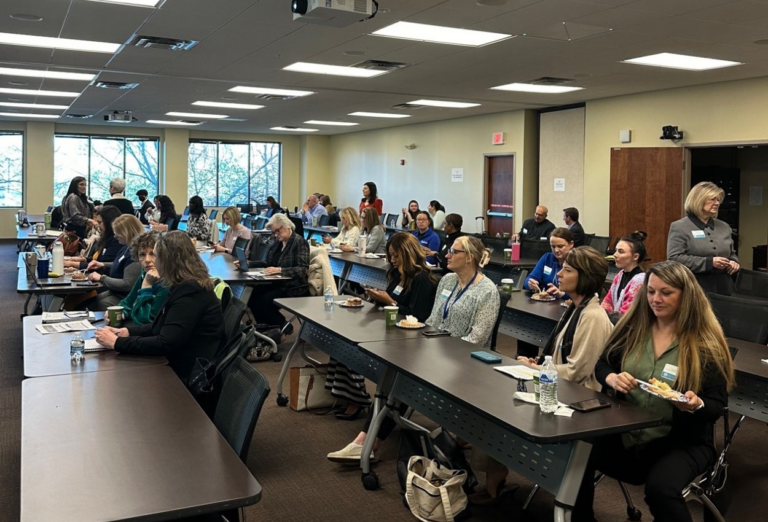(Note: This guest piece was written by Elizabeth Holtsclaw, MA, Health Systems Manager, State & Primary Care Systems, American Cancer Society)
Remember in elementary school when one of the first assignments of the new school year was to write an essay titled: How I Spent My Summer? In the spirit of the back-to-school season and recognizing August as National Immunization Month, I’d like to share how I spent my summer: Advocating for the HPV vaccination in Kentucky.
The American Cancer Society, along with the Kentucky Department for Public Health and other stakeholders and health care systems, convened community and healthcare leaders in Paducah, Louisville, Lexington and Somerset for roundtable discussions about the need for increasing HPV vaccination in the state. These HPV roundtables not only served as networking and professional development opportunities, but also helped increase awareness of the issue, and served as a catalyst for best practice sharing and idea generation on ways to close the HPV immunization disparity gap. We’ve challenged each region to develop their own SMART goals that will work in their area to increase HPV vaccination.
And that disparity gap? It’s significant. But first, a little about the vaccine.
HPV vaccination is cancer prevention
The Human Papillomavirus (HPV) is a very common virus that can lead to cancer-causing infections. In fact, every year 33,000 people are diagnosed with HPV cancers. The HPV vaccine prevents six types of cancer – cancers of the cervix, throat, anus, penis, vagina and vulva – and is expected to prevent 90% of HPV-related cancers when given before a child is exposed to the virus.
The two-shot HPV vaccine series is best given to boys and girls at ages 11 or 12, which is generally before they are exposed to the virus and when their immune systems can provide the most protection. That’s also the age when parents are usually taking adolescents in for their meningococcal and Tdap (Tetanus, Diphtheria and Pertussis) vaccinations, so getting Kentucky adolescents vaccinated against HPV should be simple, right?
So there’s a vaccination that can prevent cancer, but people aren’t getting it
The CDC recently released its latest report from the National Immunization Service-teen (NIS-teen) survey, a national survey which gathers information on vaccination rates of 13-17 year olds in the US. You can find the report in the Morbidity and Mortality Weekly Review. The report shows that the rate of 13 to 17-year-olds with one dose of the HPV vaccine increased slightly, from 65.5% in 2017 to 68.1% in 2018, and the rate for series completion increased from 48.6% to 51.1%. However, these increases were only seen in males.
And here’s the thing about that disparity in Kentucky: Kentucky falls below the national average on HPV vaccination. We know that adolescents are getting their other vaccines (Tdap at 84.9% and meningococcal at 84.4%) but not getting the HPV vaccine (first dose of HPV is 56.9% and up-to-date vaccination is 42.6%. You can view this in the MMWR supplemental table.
Here’s a snapshot:
- According to the Kentucky Cancer Registry, Kentucky has the highest HPV-related cancer burden in the nation
- The Centers for Disease Control (CDC) National Immunization Survey indicates that Kentucky is 49th in the nation for HPV vaccination
- Only 42.6% of Kentucky adolescents are up to date on completing the HPV two-shot series, which is below the national average of 51.1% (68.1% of adolescents age 13-17 have received the first dose of the series)
Why the gap?
Reasons for the vaccination gap vary, depending on a multiple factors – parents feel their child isn’t sexually active yet at age 11 or 12 and are not in need of the vaccine, or they aren’t aware of the vaccine at all – but research tells the biggest factor that leads to parents getting their children vaccinated is simply the clinician recommending it. The MMWR data referenced above emphasized the importance of a provider recommendation as HPV vaccination rates for adolescents whose parents reported receiving a provider recommendation were 28 percentage points higher than those who did not.
That’s right: Parents receiving the physician or nurse practitioner’s recommendation of the vaccine – on the same day and in the same way as other vaccines – were more likely to make sure their children were vaccinated. In fact, studies show parents value the HPV vaccine equally with other vaccines … they just need to hear the endorsement of the provider as a prompt to action. Parents need to know that the vaccine is cancer prevention, but they also want reassurances that the vaccine is safe, effective and lasts.
That seems simple enough, right?
Of course clinicians may not be comfortable recommending the vaccine if they have questions of their own, and the HPV Roundtable discussions have shown that even some healthcare providers feel like they need more information about the vaccine. More information about HPV, the vaccine, and guides for healthcare providers can be resourced at cancer.org/hpv.
And I also encourage parents or members of the community who have questions or concerns to visit cancer.org/hpv and get the facts. As a parent, I have one more task on my to-do list this summer: to get my 11-year-old son his HPV vaccination this week, along with his other adolescent vaccines. And I can assure you his passionate mom will be taking photos of him the whole time. These pictures will join the ones I have shared on social media of my 13-year-old daughter who completed the two-shot series, to show Kentucky that I want to protect all of Kentucky’s children as I have my children.
Here’s what you can do
The data is clear that a strong provider recommendation is the key to a successful increase in HPV vaccination rates.
- Bundle your adolescent vaccine recommendation “Your child is here today for three vaccines. These will help protect her from meningitis, HPV cancers and pertussis.”
- Engage all office staff in your commitment to increasing HPV vaccines in the office.
- Let’s be creative in engaging diverse provider groups in this work; Pediatricians, family practice doctors, OB-GYN, dentists, orthodontists, school districts and communities.
- There are ways to talk to parents, such as motivational interviewing or a presumptive recommendation, that are proven to help them feel comfortable in vaccinating their children.
- Know your own data! What is our state data? Your county and school system data? Your clinic data as a whole and the individual provider data? Because HPV is not a mandated vaccine, it’s not always a priority for reporting and data collection. We often THINK we are doing better than what’s really happening.
- Engage in our regional Roundtables and within your networks to make HPV vaccination a priority. Contact me at elizabeth.holtsclaw@cancer.org to find out more.
The opportunity we can’t miss
We have an opportunity in Kentucky and the rest of the nation to see almost immediate reduction in adverse health outcomes related to the HPV virus. Very rarely in public health are we able to see such immediate and dramatic improvements such as is being seen in areas with high vaccination rates. It’s incredibly exciting and I welcome the energy we’ve seen across the state this summer.
As summer winds down, the American Cancer Society plans to keep the conversation about HPV vaccination going, as well as continue the momentum the Roundtables have begun. Additional Roundtables are scheduled for Hazard, Bowling Green and Morehead with other activities in London and Prestonsburg in the coming months. There is an energy and excitement in each of these communities and we sincerely hope it will translate to a healthier future for Kentucky.
Together – as a community, as parents, as healthcare providers – we can truly make this a summer to be remembered in the fight against cancer.






